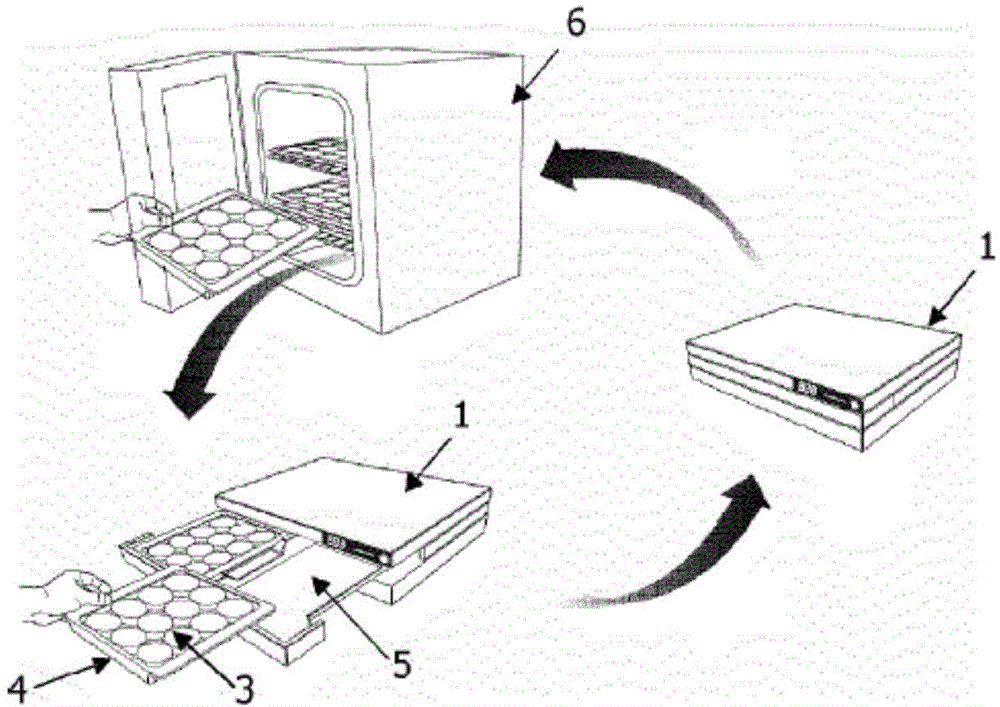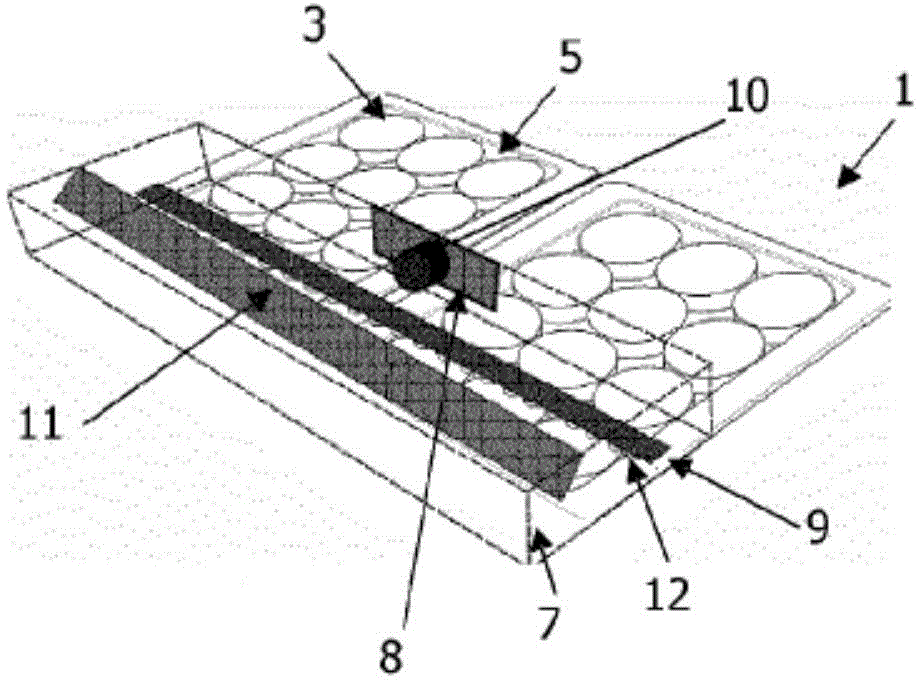Device for early detection of micro-organisms
A technology for early detection and microorganisms, applied in the determination/inspection of microorganisms, biological tests, measuring devices, etc., which can solve the problems of long time, pollution, and high cost
- Summary
- Abstract
- Description
- Claims
- Application Information
AI Technical Summary
Problems solved by technology
Method used
Image
Examples
Embodiment Construction
[0042] The device 1 according to the invention enables a particularly early detection of contaminated microorganisms, for example bacteria, yeasts, mycoplasmas, molds, which are ultimately present in the sample to be analyzed. In fact, this device enables the detection of colonies even though they remain invisible to the naked eye, and, using the light emitted naturally from said colonies, does not require the addition of reagents nor the measurement of natural or autofluorescence. This device is attached figure 2 And the device shown in accompanying drawing 3.
[0043]As for the samples that have to be analyzed, they can start from industries in various fields, for example, pharmaceutical, agricultural products, biotechnology or even the cosmetics industry. In fact, in this type of industry, the rapid detection of the presence of final contaminants is of particular interest, even necessary. In fact, the products manufactured and / or converted in this type of industry are pa...
PUM
 Login to View More
Login to View More Abstract
Description
Claims
Application Information
 Login to View More
Login to View More - R&D
- Intellectual Property
- Life Sciences
- Materials
- Tech Scout
- Unparalleled Data Quality
- Higher Quality Content
- 60% Fewer Hallucinations
Browse by: Latest US Patents, China's latest patents, Technical Efficacy Thesaurus, Application Domain, Technology Topic, Popular Technical Reports.
© 2025 PatSnap. All rights reserved.Legal|Privacy policy|Modern Slavery Act Transparency Statement|Sitemap|About US| Contact US: help@patsnap.com



